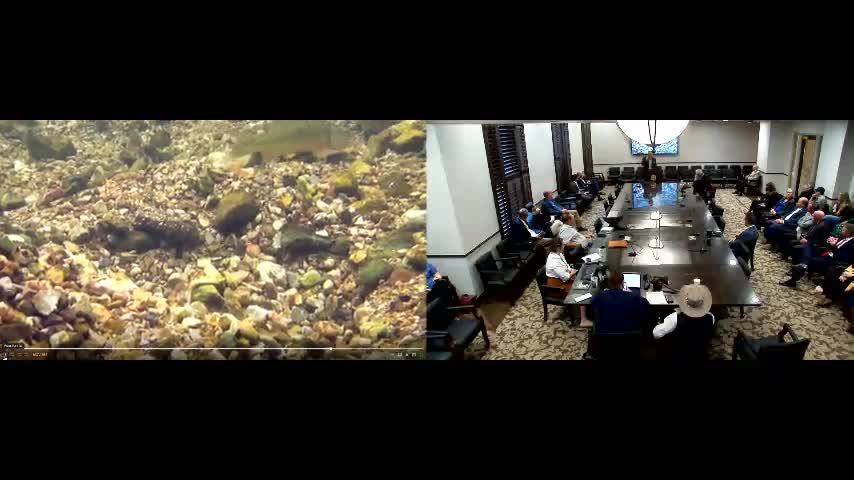Water Project Sparks Concerns Over Habitat and Resources
October 30, 2024 | Energy and Natural Resources, House of Representatives, Legislative, Oklahoma
This article was created by AI summarizing key points discussed. AI makes mistakes, so for full details and context, please refer to the video of the full meeting. Please report any errors so we can fix them. Report an error »

In a recent government meeting, officials discussed the potential impacts of a proposed water project in Southeastern Oklahoma, raising concerns about water quantity, quality, and habitat loss. The project involves a pump-back facility that would draw water from the Kiamichi River, with plans for three reservoirs covering a combined area of approximately 1,500 acres and a storage capacity of 118,000 acre-feet. This volume is comparable to that of Hugo Lake, which is often at low capacity, prompting worries about the sustainability of water resources in the region.
Experts highlighted that the project could significantly affect local ecosystems, particularly the habitats of sensitive species. The red spot chub, a key species in the area, creates mounds that support the spawning of various other fish species. Any disruption to their habitat could have cascading effects on the entire aquatic ecosystem. Concerns were also raised about the potential for increased turbidity and sedimentation due to extensive excavation and construction activities, which could further threaten vulnerable species.
Legislators questioned the project's benefits, noting that it primarily serves Texas rather than Oklahoma. They expressed skepticism about the promised job creation, pointing out that the local unemployment rate is already low, and many jobs may go to workers from outside the area. The meeting underscored a growing apprehension among local officials and residents regarding the long-term implications of the project on both the environment and the community's resources.
As discussions continue, stakeholders are calling for greater transparency and clarification on the project's operational details, particularly concerning water withdrawal processes and the management of excavated materials. The meeting concluded with a consensus that while the project may offer some benefits, the potential risks to Oklahoma's natural resources and ecosystems warrant careful consideration.
Experts highlighted that the project could significantly affect local ecosystems, particularly the habitats of sensitive species. The red spot chub, a key species in the area, creates mounds that support the spawning of various other fish species. Any disruption to their habitat could have cascading effects on the entire aquatic ecosystem. Concerns were also raised about the potential for increased turbidity and sedimentation due to extensive excavation and construction activities, which could further threaten vulnerable species.
Legislators questioned the project's benefits, noting that it primarily serves Texas rather than Oklahoma. They expressed skepticism about the promised job creation, pointing out that the local unemployment rate is already low, and many jobs may go to workers from outside the area. The meeting underscored a growing apprehension among local officials and residents regarding the long-term implications of the project on both the environment and the community's resources.
As discussions continue, stakeholders are calling for greater transparency and clarification on the project's operational details, particularly concerning water withdrawal processes and the management of excavated materials. The meeting concluded with a consensus that while the project may offer some benefits, the potential risks to Oklahoma's natural resources and ecosystems warrant careful consideration.
View full meeting
This article is based on a recent meeting—watch the full video and explore the complete transcript for deeper insights into the discussion.
View full meeting
